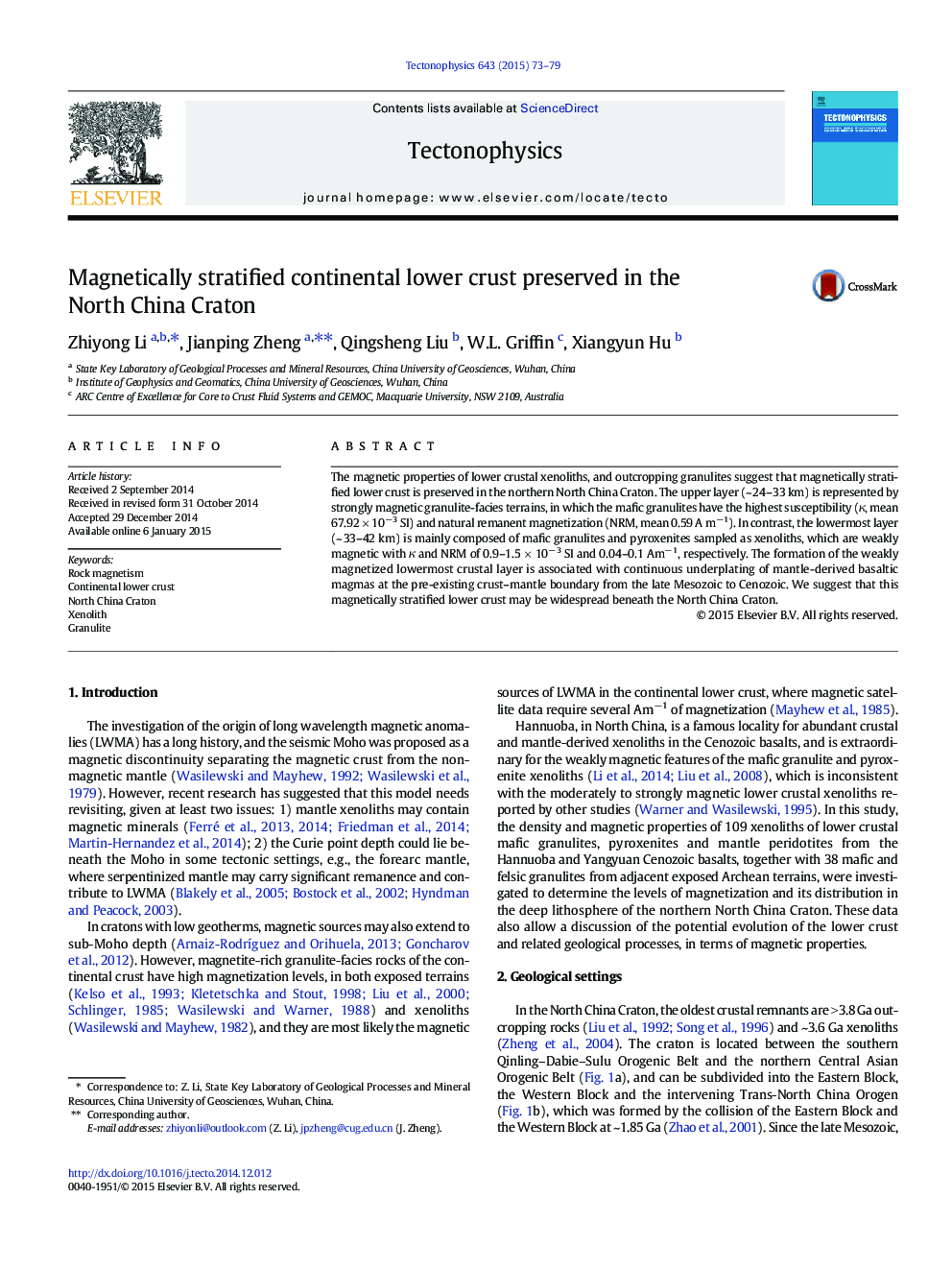| Article ID | Journal | Published Year | Pages | File Type |
|---|---|---|---|---|
| 4691680 | Tectonophysics | 2015 | 7 Pages |
•Lower crustal xenoliths and terrain granulites show large magnetic differences.•Stratified magnetic lower crust is preserved in the North China Craton.•Underplating of basaltic magmas since the late Mesozoic played a key role.
The magnetic properties of lower crustal xenoliths, and outcropping granulites suggest that magnetically stratified lower crust is preserved in the northern North China Craton. The upper layer (~ 24–33 km) is represented by strongly magnetic granulite-facies terrains, in which the mafic granulites have the highest susceptibility (κ, mean 67.92 × 10−3 SI) and natural remanent magnetization (NRM, mean 0.59 A m−1). In contrast, the lowermost layer (~ 33–42 km) is mainly composed of mafic granulites and pyroxenites sampled as xenoliths, which are weakly magnetic with κ and NRM of 0.9–1.5 × 10−3 SI and 0.04–0.1 Am−1, respectively. The formation of the weakly magnetized lowermost crustal layer is associated with continuous underplating of mantle-derived basaltic magmas at the pre-existing crust–mantle boundary from the late Mesozoic to Cenozoic. We suggest that this magnetically stratified lower crust may be widespread beneath the North China Craton.
